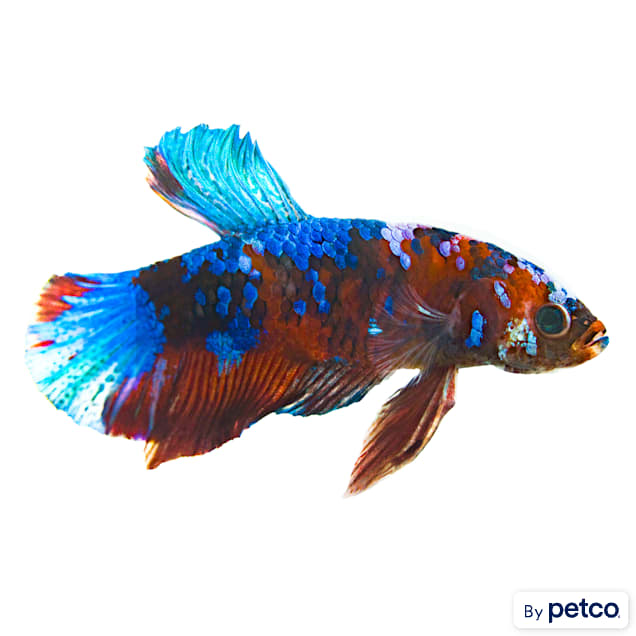Common Betta Fish Diseases and Just How to stop Them
Just How to Breed Betta Fish Effectively: Professional Strategies and Insights for Hobbyists Seeking To Increase Their Betta Collection
Reproducing Betta fish requires a nuanced understanding of genetics and ecological problems, making it necessary for hobbyists to approach the procedure with both diligence and treatment. Producing an ideal reproduction atmosphere, choosing the ideal sets, and observing the details of their courtship habits are foundational actions that can substantially impact the result. The succeeding treatment of the fry is vital for guaranteeing their healthy advancement. As we discover these essential parts, it becomes clear that effective reproduction is not nearly the first pairing but includes a broader method that merits cautious factor to consider.
Understanding Betta Fish Genetics
Recognizing the genetics of Betta fish is important for successful reproduction, as it affects qualities such as shade, fin form, and habits. Betta fish display a varied variety of colors and patterns, mainly identified by their genetic makeup.
In addition to coloration, fin morphology is another significant aspect of Betta genes (betta fish). The form and size of fins are influenced by various genetics, consisting of those that figure out whether the fins are short, long, or veil-shaped. Recognizing these hereditary variations helps dog breeders anticipate the phenotypic results of their offspring
In addition, behavior characteristics such as aggressiveness and territoriality can additionally be affected by genes. These habits play an important role in the reproducing process, as they can influence spawning success and the overall personality of the resulting fry. By thoroughly comprehending these hereditary principles, breeders can make educated decisions, inevitably improving their breeding programs and accomplishing desirable outcomes.
Preparing the Breeding Setting
Producing an optimal breeding atmosphere is essential for the successful recreation of Betta fish. The first step in preparing this environment is to choose an ideal breeding tank, ideally varying from 5 to 10 gallons.
Following, take into consideration using a sponge filter or an air rock to give mild water circulation without creating strong currents that can worry the fish. It is essential to mount plants or breeding cones to use hiding places and promote comfort for the woman during the spawning process. Floating plants, such as Java moss or water sprite, can also produce a more all-natural setting while assisting in bubble nest building by the male.
Prior to introducing the reproducing pairs, make sure the water is conditioned and without unsafe chemicals, such as chlorine or heavy metals. betta fish. Regular water changes should be conducted to keep optimum water top quality, boosting the opportunities of effective reproduction. With these prep work in position, the reproducing atmosphere will certainly sustain the wellness and wellness of both Betta fish
Choosing Breeding Pairs
Selecting the right reproduction pairs is crucial for attaining effective Betta fish reproduction. Healthy and balanced Betta fish display vibrant shades, clear eyes, and active actions.
Character is another vital consideration, as Betta fish are recognized for their hostile nature. It is read this article recommended to pick a male and female that display compatible characters to minimize stress and anxiety throughout the breeding procedure. A tranquil man can encourage a smoother courtship, while a woman that is too aggressive might interrupt the procedure.
Genetic background over at this website also plays a significant duty in the high quality of the offspring. Reproducing fish that are genetically varied can reduce the threat of hereditary health issues and boost the general vigor of the fry. It is advantageous to look into the lineage of both the man and woman, concentrating on desirable attributes such as fin type, shade patterns, and dimension.
The Breeding Refine
The breeding process of Betta fish needs careful preparation and focus to detail to ensure a successful end result. Initially, it is crucial to prepare an ideal breeding storage tank, preferably a 5-10 gallon aquarium with a temperature preserved at 78-80 ° F. The container ought to be outfitted with a heating unit, filter (ideally sponge type to stay clear of solid currents), and plenty of aquatic plants for the woman to hide.
Once the environment is established, present the picked reproducing set to the storage tank, permitting them to accustom. Observe their habits; the male will certainly present intricate courtship routines, consisting of flaring his fins and constructing a bubble nest. If the lady reveals passion, she will certainly show upright stripes suggesting readiness for spawning.
When the woman is receptive, both will certainly participate in a mating embrace, during which the male feeds the eggs. It is crucial to monitor their communications very closely, as the man may become aggressive. After generating, get rid of the woman to stop prospective harm. The male will certainly have a tendency to the eggs, which normally hatch within 24-36 hours. Maintaining optimal water problems throughout this period is essential for the growth of healthy and balanced Betta fry.
Caring for Betta Fry

Feeding Betta fry is important, as they call for a diet high in protein. At first, they can be fed infusoria or fluid fry food, transitioning to carefully crushed read this article top notch pellets as they expand. Feed small portions several times a day to urge healthy and balanced development without overloading the tank with uneaten food.

As they mature, check their growth very closely and divide any hostile individuals to avoid damage. By providing a supporting environment and correct nutrition, enthusiasts can effectively raise Betta fry right into vibrant, healthy and balanced fish, ultimately improving their breeding ventures.
Conclusion
Effective Betta fish reproduction requires meticulous interest to hereditary option, ecological conditions, and care for the fry. By comprehending the genes of Betta fish and preparing an ideal breeding environment, hobbyists can improve the possibilities of generating vivid, healthy and balanced offspring.